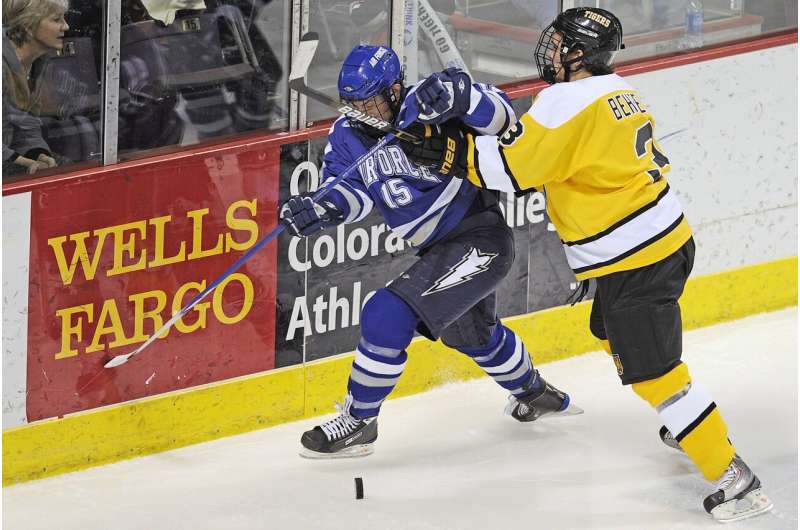This article has been reviewed according to Science X's editorial process and policies. Editors have highlighted the following attributes while ensuring the content's credibility:
fact-checked
peer-reviewed publication
trusted source
proofread
Rate of concussions after hits to side of the head dropped following NHL Rule 48, study finds

The incidence and proportion of concussions suffered by NHL players following hits to the lateral side of the head reduced substantially following the implementation of the league's Rule 48, according to a study led by Michael Hutchison, an associate professor in the University of Toronto's Faculty of Kinesiology and Physical Education (KPE).
The study, published in JAMA Network Open, compared the incidence and mechanisms of concussions that occurred following hits to the head before and after the implementation of Rule 48, which was introduced in the NHL's 2010–11 season to prohibit direct hits to the lateral side of the head, and was widened the following season to prohibit direct contact to all areas of the head.
In all, 688 concussions were analyzed: 231 for NHL regular seasons from 2006 to 2010 (before the rule was introduced) and 457 for the 2014 to 2019 seasons.
"We hypothesized that after the implementation of Rule 48, we would observe a change of behavior whereby there would be fewer concussions resulting from hits to the head," said Hutchison, who is director of the concussion program at KPE's David L. MacIntosh Sports Clinic.
"Our findings show a significant decline in concussions post-Rule 48 implementation, specifically a decrease of 18.8 percentage points in the proportion of concussions due to hits to the lateral aspect of the head, which dropped from 34.6% (80 out of 231 concussions) before Rule 48 to 13.3% (61 out of 457) afterward."
While these results indicate a positive behavioral change in the sport, Hutchison's study observed an overall increase in the incidence of concussion between the two time frames—although incidence of concussion due to hits to the lateral aspect of the head decreased from 1.6 per 100 games to 1.0 per 100 games.
Hutchison says the overall increase in concussion incidence between the two time frames ran contrary to the team's hypothesis, but noted that there were numerous factors at play that could contribute to an increase in reports of concussions.
"Importantly, the period following the introduction of Rule 48 coincided with enhanced efforts regarding concussion awareness and identification of suspected concussions, including the addition of a spotter program whereby certified athletic trainers watch games centrally in an off-site location to identify visible signs of possible concussions, while in-arena spotters watch games live to identify visible signs, including those not captured by video," he said.
Assessment tools and approaches used to diagnose a suspected concussion have also improved over time, says Hutchison, and education campaigns about the health risks associated with concussion and the importance of early detection have ramped up, too.
"These targeted initiatives may have resulted in greater awareness and reporting of concussion, thereby likely contributing to the increase in concussion incidence between the two periods," says Hutchison.
"The identification and prevention of concussion is multifaceted, but of importance. Rule 48 appears to be effective for its intended purpose—eliminating behaviors that accounted for the majority of concussions in the NHL."
Hutchison says it's important to keep exploring ways to prevent concussions and protect player safety. For example, he noted that in recent years, it appears that most concussions occur around the perimeter of the rink—specifically the side boards and corners.
"Given the inherent nature of collision—both intentional body checks and incidental collisions—future research should involve a close examination of the behaviors and mechanisms of concussions following player-to-player contact around the perimeter of the arena, such as the types of surfaces and environments, and specific locations of head contact," says Hutchison.
"This study provides important insight regarding patterns of concussions and the potential influence of policies targeting health and safety."
More information: Michael G. Hutchison et al, Concussion Characteristics in the National Hockey League Before and After the Introduction of Rule 48, JAMA Network Open (2023). DOI: 10.1001/jamanetworkopen.2023.44399



















